L'ACEER considère la conservation de la biodiversité et des paysages fonctionnels comme une mission parallèle à la conservation de la culture et des moyens de subsistance traditionnels en Amazonie ; ce sont les deux faces d'une même pièce, pour ainsi dire. Une grande partie de notre travail est menée en partenariat avec les communautés indigènes locales, et ces partenariats sont fondés sur l'éthique. En 2021, ACEER a élaboré une politique éthique qui régit nos collaborations avec les communautés locales et la manière dont nous nous engageons dans la justice environnementale. La politique d'éthique donne la priorité à l'autonomisation, au respect, à l'humilité culturelle, à la transparence et à l'autoréflexion.
Nous nous concentrons sur les communautés autochtones en raison des relations que nous avons pu établir et parce que nous connaissons l'impact que la collaboration avec les communautés autochtones peut avoir sur la conservation :
- Les territoires autochtones abritent plus de 80 % de la biodiversité mondiale [Source : Banque mondiale : Banque mondiale]
- Le fait de donner aux groupes indigènes des droits sur leurs terres ancestrales réduit le défrichement de leurs forêts de plus de trois quarts, et les perturbations forestières diminuent d'environ deux tiers en seulement deux ans. [Source : Blackman et al 2017)
- Il a été démontré que les méthodes d'agriculture à petite échelle des communautés indigènes favorisent davantage la biodiversité que l'agriculture commerciale. [Source : Scherr et McNeely]
- Les populations autochtones possèdent une expertise en matière d'adaptation, d'atténuation et de réduction des risques liés au climat et aux catastrophes [Source : Banque mondiale : Banque mondiale]
Découvrez quelques-uns des projets et programmes spécifiques sur lesquels nous avons travaillé en collaboration avec les communautés autochtones !
Maijuna
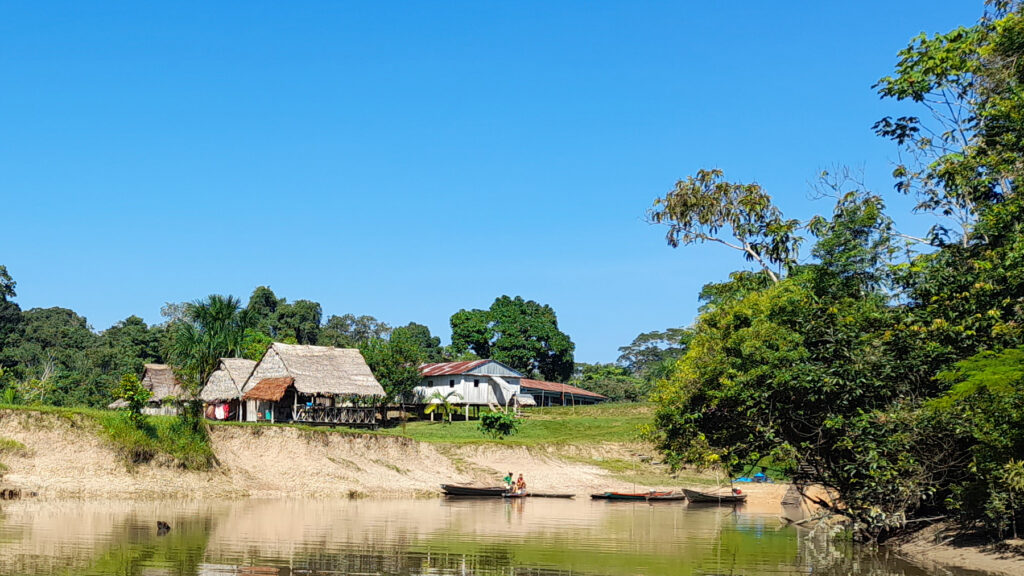
Les Maijuna constituent l'un des groupes indigènes les plus vulnérables du Pérou, avec moins de 600 individus répartis dans quatre communautés au nord-est de la ville d'Iquitos, dans le département de Loreto. Les Maijuna protègent et conservent près d'un million d'hectares de leurs terres ancestrales dans la zone de conservation régionale Maijuna-Kichwa. Les deux priorités déclarées des Maijuna sont de comprendre les changements dans les populations de mammifères sur leurs terres ancestrales et de gagner un revenu durable afin de ne pas avoir à exploiter leurs ressources naturelles pour répondre à leurs besoins fondamentaux.
Recherche sur la conservation
La communauté Maijuna de Sucusari est la base d'une grande partie de la recherche d'ACEER sur le terrain. Les responsables de la conservation et le personnel d'ACEER travaillent avec les Maijuna, l'ONG partenaire OnePlanetet d'autres pour mettre en œuvre des enquêtes par piégeage photographique et d'autres approches. Cette recherche démontre la valeur de la diversité bioculturelle des terres ancestrales des Maijuna et la durabilité des moyens de subsistance traditionnels des Maijuna.

Revenu durable
Les Maijuna travaillent avec un certain nombre d'ONG sur des projets de développement économique durable. Le travail d'ACEER se concentre sur deux des principaux projets prioritaires des Maijuna : l'écotourisme et l'apiculture indigène sans aiguillon.
Les Maijuna se disent très intéressés par l'écotourisme, qui leur permet de gagner de l'argent en enseignant aux visiteurs la conservation et la culture Maijuna. Au cours des dernières années, ils ont travaillé avec OnePlanet pour développer un certain nombre d'ateliers d'écotourisme axés sur des sujets allant de l'écologie à la pêche et à la cuisine en passant par l'artisanat traditionnel. Les programmes d'éducation expérientielle d'ACEER participent à ces ateliers et permettent aux Maijuna d'atteindre les objectifs qu'ils se sont fixés. Par exemple, les ateliers dirigés par les Maijuna constituent l'épine dorsale d'une grande partie des programmes éducatifs développés par le programme Bringing the Amazon Home d'ACEER !
Les apiculteurs de Maijuna élèvent des abeilles sans dard indigènes qui fournissent des services de pollinisation essentiels aux écosystèmes forestiers et agricoles environnants et produisent du miel que Maijuna peut vendre. Le miel est cultivé et récolté de manière durable, de sorte que les apiculteurs peuvent tirer un prix élevé de sa vente aux visiteurs et à la ville d'Iquitos. Les abeilles indigènes sans dard et leur miel occupent une place particulière dans la culture traditionnelle des Maijuna. Traditionnellement, le miel était récolté de manière destructive ; l'approche moderne donne la priorité à la santé de la ruche et optimise à la fois la conservation et le profit.
Ce projet a été développé par les Maijuna, OnePlanet et d'autres partenaires. ACEER a travaillé avec ses partenaires pour développer du matériel éducatif que les Maijuna peuvent utiliser pour former de nouveaux apiculteurs à l'apiculture durable, y compris dans d'autres communautés. Depuis leur développement, ces tutoriels multimédias ont été utilisés dans les communautés voisines de la rivière Napo, dans différentes régions du Pérou, et même au niveau international !
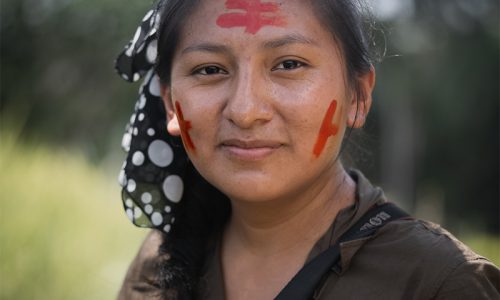
"Vivre en harmonie avec la nature, assurer notre bien-être et celui des générations futures".
~ Rut Mottoccanchi
Ese'Eja
Depuis des générations, les Ese'Eja protègent leurs terres en vivant de manière durable. Ils se sont lancés dans l'écotourisme, partageant leurs connaissances et leur accès à la forêt tropicale avec des personnes du monde entier. Ils souhaitent préserver leurs coutumes et leur culture, mais ils se heurtent à des obstacles de plus en plus nombreux de la part d'un gouvernement qui tolère des méthodes d'agriculture, d'exploitation minière et de transport dévastatrices pour l'environnement.
L'ACEER s'efforce de donner à la nation Ese'Eja les moyens de préserver ses terres, de vivre selon ses propres coutumes, de partager ses connaissances sur l'écosystème de la forêt tropicale et de s'adapter aux réalités du XXIe siècle d'une manière culturellement pertinente.
L'ACEER a collaboré avec la National Geographic Society et l'université du Delaware pour mettre en contact une équipe d'anthropologues, de professeurs, d'étudiants et d'autres personnes passionnées par la conservation avec le peuple Ese' Eja.
Leurs objectifs, menés par la nation Ese'Eja, étaient les suivants :
Préservation de la culture
S'appuyant sur les liens étroits qu'entretient l'ACEER avec le peuple Ese' Eja, l'équipe a commencé à documenter les coutumes, les récits culturels et les moyens de subsistance traditionnels des Ese'Eja. Le projet s'est concentré sur la création d'une ressource que les Ese'Eja pourraient utiliser pour éduquer les générations futures et communiquer l'importance de leur culture traditionnelle à un public mondial. ACEER a aidé la nation Ese'Eja à publier un livre photojournalistique, Les terres ancestrales des Ese'Eja : The True People. L'ACEER a également facilité les connexions pour l'exposition éducative, Le peuple Ese'Eja de l'Amazonie : Connected by a Threadqui parcourt les États-Unis. En savoir plus sur l'exposition.
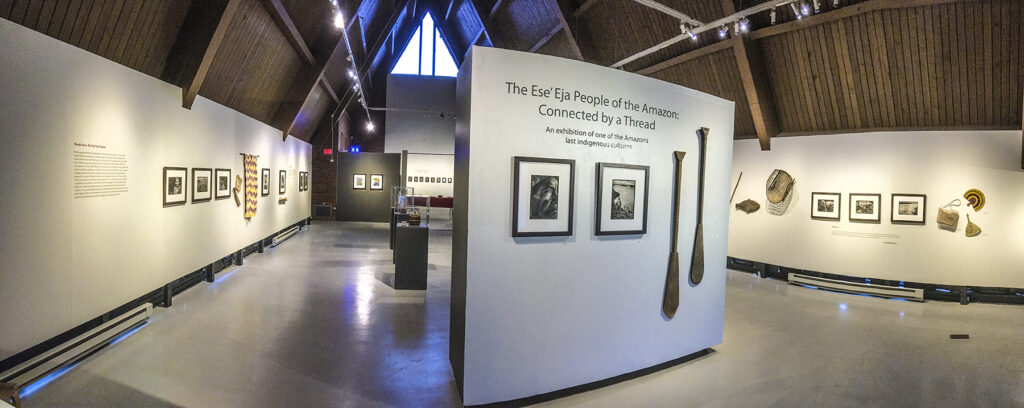
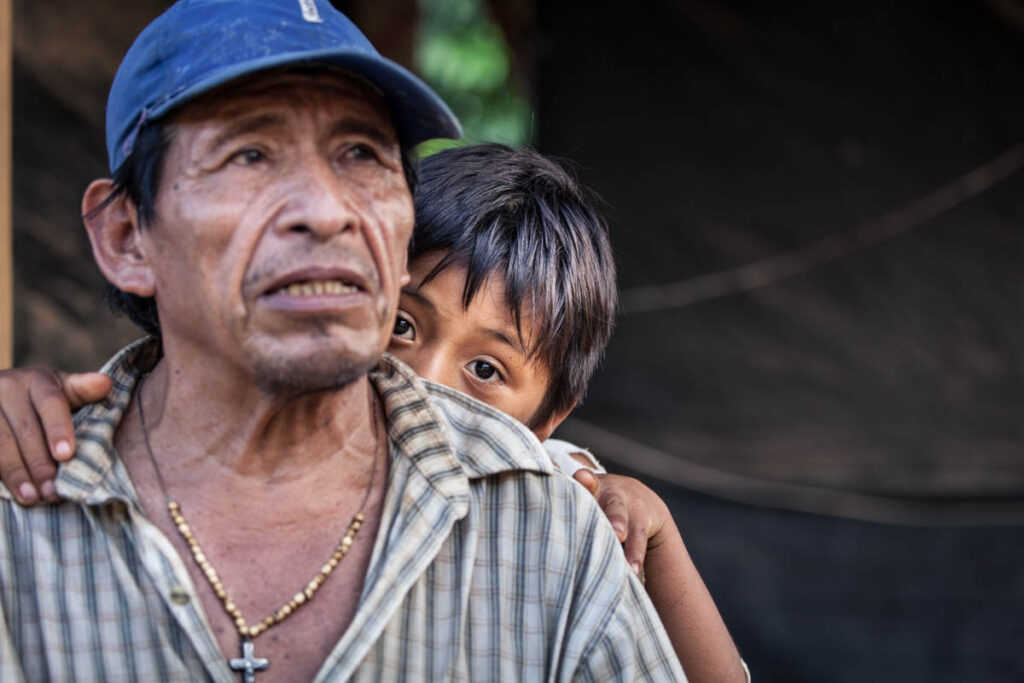
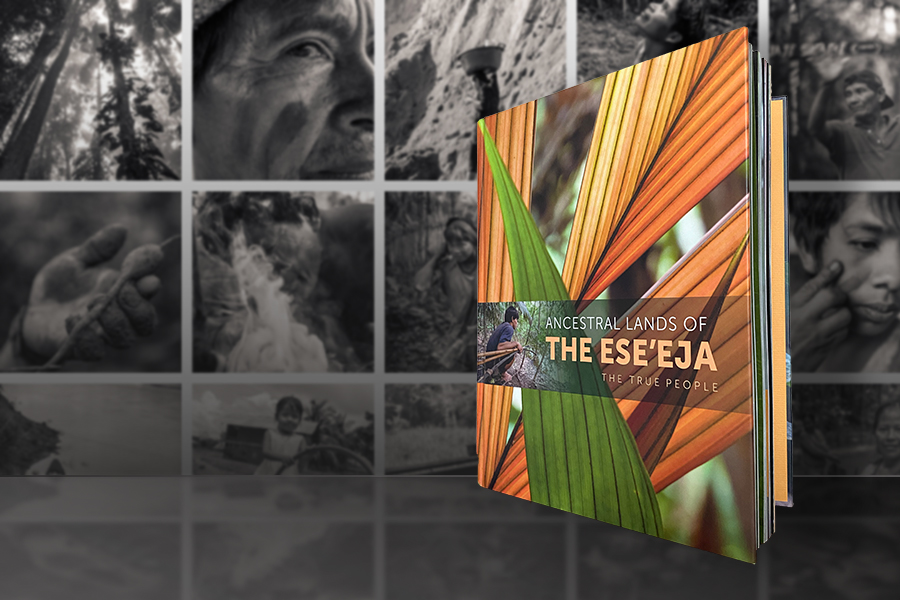
Plan de vie
L'équipe continue de travailler avec le peuple Ese'Eja pour créer un plan flexible et durable qui permet aux communautés de naviguer dans les réalités du 21e siècle selon leurs propres termes. Il s'agit de maintenir leur perspective tout en permettant des interactions positives et un impact sur leur monde en évolution. L'ACEER met en relation les anciens Ese'Eja avec des facilitateurs extérieurs, et nous aidons à sensibiliser et à soutenir les initiatives mises en place par les Ese'Eja.
Depuis son inauguration au Smithsonian's National Museum of the American Indian, l'exposition "Ancestral Lands of Ese'Eja" (Terres ancestrales des Ese'Eja) a été inaugurée. Terres ancestrales des Ese'Eja : Le vrai peuple a voyagé dans 12 villes des États-Unis et a été accueillie dans des collèges, des universités, des musées, les jardins de Longwood et l'ambassade du Pérou à Washington, D.C. Des dizaines de classes à travers le pays ont participé à des visites éducatives de l'exposition et ont bénéficié de la sagesse des Ese'Eja. À ce jour, l'exposition a été vue par près d'un million de personnes.
L'exposition, Terres ancestrales des Ese'Eja : Le vrai peuple le livre et les dons ont permis de récolter plus de 35 000 dollars pour le Fonds de développement communautaire Ese'Eja géré par l'ACEER. Ce fonds est réparti entre les communautés Ese'Eja pour soutenir les initiatives que chaque village juge nécessaires. En 2020 et 2021, le montant total du fonds a été utilisé pour obtenir de la nourriture, des médicaments et des équipements de protection individuelle pour les Ese'Eja alors qu'ils luttaient contre la pandémie de COVID-19.
Shipibo
Les Shipibo-Conibo sont un groupe indigène de 20 000 personnes vivant le long de la rivière Ucayali. Ils représentent 8 % des populations indigènes du Pérou. Les Shipibo-Conibo sont connus pour leurs textiles et leurs poteries aux motifs géométriques semblables à des labyrinthes. Comme d'autres groupes indigènes de l'Amazonie, ils ont souffert des pressions extérieures exercées par la prospection pétrolière, l'exploitation forestière et le narcotrafic. Ces dernières années, un nombre croissant d'individus se sont installés dans les villes de Pucallpa et de Yarinacocha, à la recherche d'une meilleure éducation, de soins de santé et d'opportunités économiques. Aujourd'hui, le changement climatique provoque des crises humanitaires pour le peuple Shipibo-Conibo. Une sécheresse prolongée suivie de pluies torrentielles ont détruit les maisons, les écoles, les dispensaires, les cultures, contaminé les réserves d'eau et propagé des maladies telles que le choléra.
ACEER a commencé à travailler avec les Shipibo-Conibo il y a plus de 15 ans. Nous avons proposé une formation aux enseignants et fourni du matériel pédagogique aux habitants de Pucallpa. Lors de catastrophes naturelles, nous avons apporté une aide humanitaire pour reconstruire les villages détruits, creuser des puits pour l'eau potable et fournir de la nourriture et des médicaments. Récemment, nous nous sommes concentrés sur des communautés comme Porvenir et d'autres le long de la rivière Pisqui, des populations qui ont été particulièrement touchées par les inondations et les maladies.
Tribu indienne Lenape du Delaware

Les membres de l'ACEER ont travaillé avec la Tribu indienne Lenape du Delaware depuis 2015. Le chef principal Dennis Coker a joué un rôle déterminant dans la création de la politique d'éthique d'ACEER avec les communautés autochtones. Le partenariat actuel d'ACEER avec la Tribu indienne Lenape du Delaware et le Centre de recherche sur l'eau de Stroud (Stroud Water Research Center) est en cours. Stroud Water Research Center est un projet de science citoyenne sur les moules d'eau douce financé par la National Geographic Society.
Soutenir notre travail
En tant qu'organisation à but non lucratif (501(C)(3)), nous dépendons de la générosité de nos donateurs.
